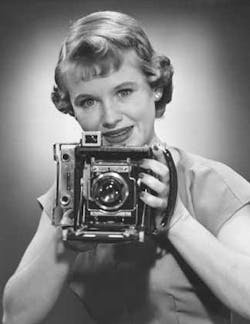Then: The birth of image capturing technology and devices
Descriptions of pin-hole cameras date back to the 5thcentury BC, but it wasn’t until 1800 that Thomas Wedgewood attempted to capture images using paper or white treated with silver nitrate. Another major development occurred in the mid-19thcentury, when Henry Fox Talbot showed that paper impregnated with silver chloride could be used to capture images.
From there, a number of major developments took place, including the work done by Alan Archibald Campbell-Swinton, who attempted to capture an image from a gas discharge tube filled with rarefied gasses that would glow when a current was applied to the two metal electrodes at each end. These experiments were later commercialized by Philo Taylor Farnsworth, who demonstrated a working version of such a video camera tube known as an image dissector in 1927. Also of note were the image Orthicon and Vidicon introduced by RCA in 1939, and Philips’ Plumbicon, Hitachi’s Saticon and Sony’s Trinicon in the 1950’s.

